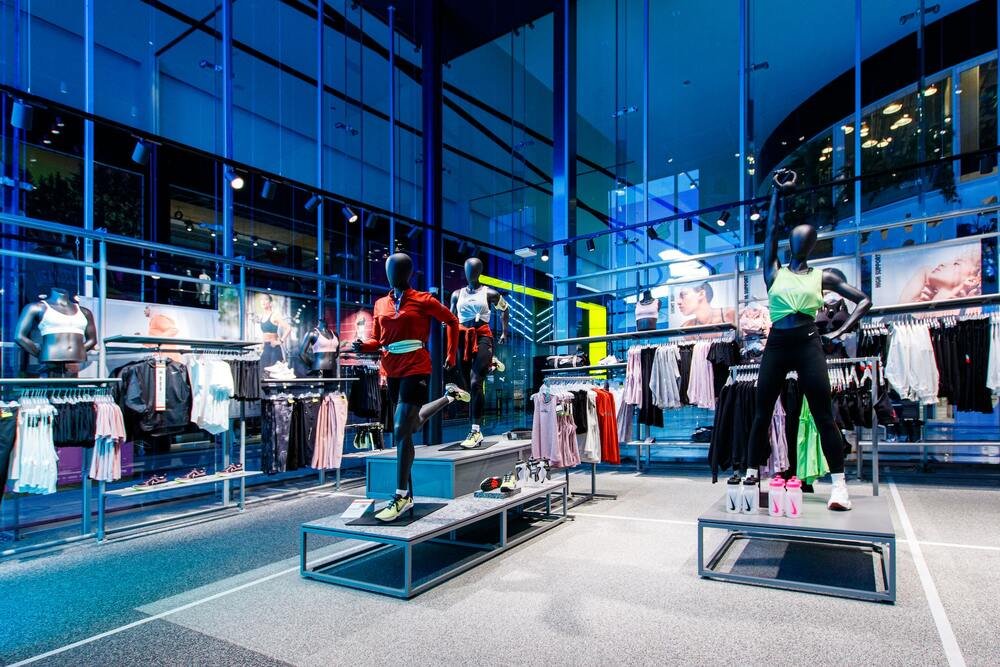The retail clothing industry is one of the largest and most competitive industries in the world. With the rise of e-commerce and online shopping, many in-store clothing businesses are struggling to keep up.
However, a well-designed business model can help these businesses thrive. In this blog, we will be focusing on the in-store clothing sector and how the business model canvas can be used to improve and grow the business. Click here to get a free template!
Key Elements of a Business Model Canvas for an In-Store Clothing Business
icon-angle-right Customer Segments
One of the key elements of the business model canvas is customer segments. Understanding your target customer is crucial for any business, and in-store clothing businesses are no exception.
By knowing who your target customers are, you can create a customer-centric business model that meets their needs and preferences.
For example, an in-store clothing business that targets the younger demographic might focus on offering trendy and fashionable clothing at an affordable price.
icon-angle-right Value Proposition
The value proposition is the unique value that your business offers to its customers. For an in-store clothing business, this could include offering a wide variety of clothing options, personalized styling services, or a unique in-store experience.
The value proposition should differentiate your business from competitors and provide a clear reason for customers to choose your store over others.
icon-angle-right Channels
The channels are the ways in which your business reaches and interacts with its customers. For in-store clothing businesses, the primary channel will likely be the physical store location.
However, complementary channels such as a website or social media presence can be used to increase visibility and reach a larger audience.
icon-angle-right Customer Relationships
Customer relationships are another important aspect of the business model canvas. In-store clothing businesses can build strong relationships with their customers through personalized customer service, loyalty programs, and regular communication.
By fostering positive relationships with customers, businesses can increase customer satisfaction and drive repeat purchases.
icon-angle-right Building Relationships
Customer relationships are crucial for any business, and in-store clothing businesses are no exception. By fostering positive relationships with customers, you can increase customer satisfaction and drive repeat purchases.
icon-angle-right Nurturing Loyalty
Understanding and nurturing your customer relationships can help you build a strong, loyal customer base and ensure the success of your business.
This can include providing personalized customer service, offering loyalty programs, and regularly communicating with customers.
icon-angle-right Revenue Streams
Revenue streams refer to the ways in which a business generates revenue. For in-store clothing businesses, this may include sales from clothing and accessories, as well as revenue from additional services such as styling or alterations.
Understanding and optimizing your revenue streams is crucial for the long-term success of your business.
icon-angle-right Key Resources
The key resources of an in-store clothing business include the physical store location, inventory, and personnel. These resources must be carefully managed in order to run a successful business.
For example, an in-store clothing business may need to invest in updating its store design to attract customers, or in hiring additional staff to improve customer service.
icon-angle-right Key Activities
The key activities of an in-store clothing business include sourcing and purchasing clothing and accessories, managing the store, and providing customer service.
These activities must be performed efficiently in order to achieve a positive outcome. For example, an in-store clothing business may need to implement systems for tracking inventory and managing customer data in order to improve efficiency and provide better customer service.
icon-angle-right Key Partners
Key partners refer to the suppliers, vendors, and other businesses that help your business operate. For in-store clothing businesses, key partners may include clothing manufacturers, suppliers of accessories, and service providers such as alteration specialists.
Building strong relationships with key partners can help businesses reduce costs and improve the quality of their offerings.
icon-angle-right Cost Structure
The cost structure of an in-store clothing business includes the costs associated with running the business, such as rent, salaries, and inventory.
Understanding and controlling these costs is crucial for the long-term success of the business. For example, an in-store clothing business may need to invest in inventory management.
Conclusion
In conclusion, the business model canvas provides a comprehensive framework for managing an in-store clothing business.
By defining customer segments, creating a compelling value proposition, leveraging channels, nurturing customer relationships, maximizing revenue streams, managing key resources, and streamlining key activities, you can ensure that your business is operating effectively and efficiently.
By regularly updating and refining your business model canvas, you can stay ahead of the competition and achieve long-term success.
Remember, the key to success in the retail clothing industry is to understand your customers and create a business model that meets their needs and expectations.
